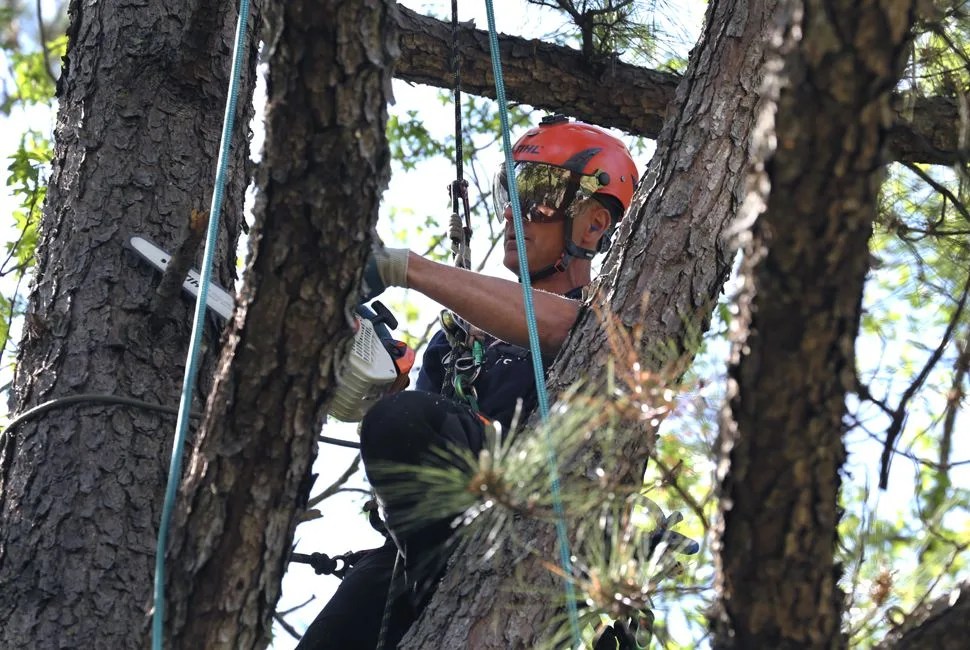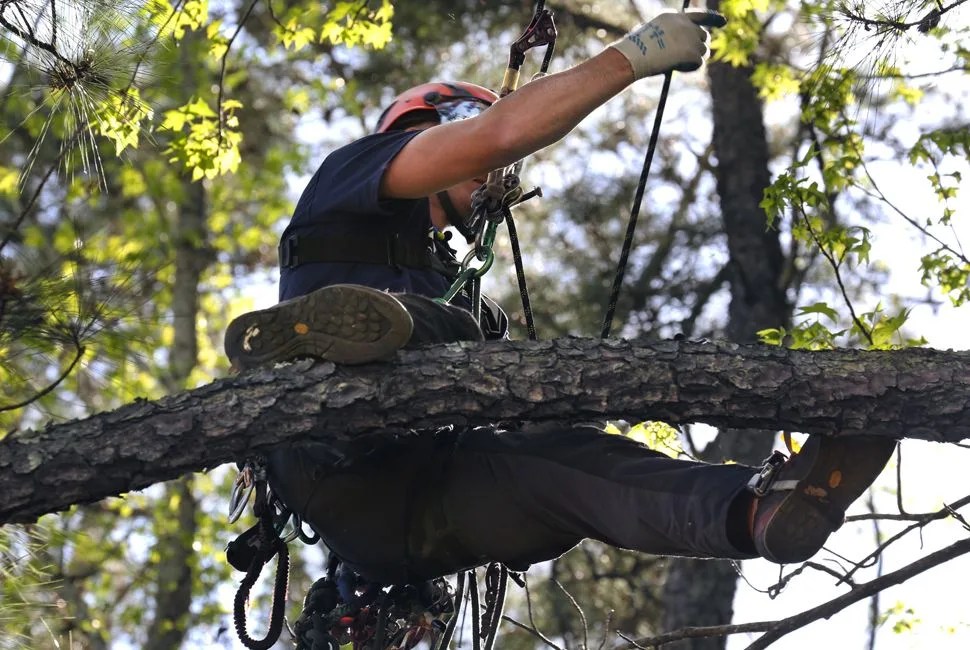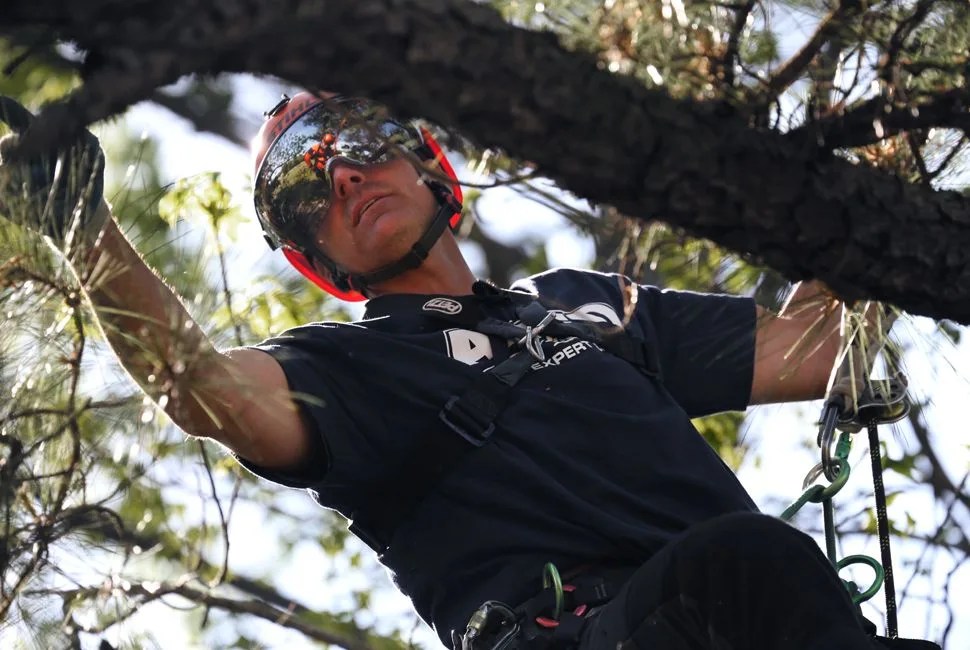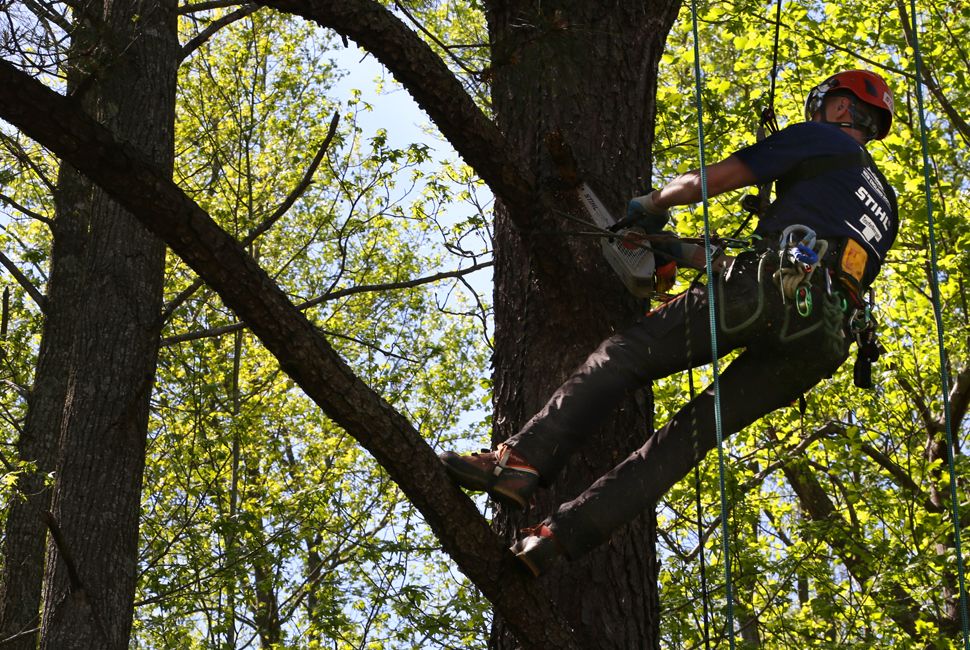7 photos
Here’s the best piece of advice about trimming trees: hire a professional. As much of a macho-man bubble burst that may be, it’s the unsexy, honest truth. The risk in climbing a tree with a chainsaw dangling at your hip is, we hope, apparent. That said, if you want to spend some time fantasizing about what it’s like to be a pro, or if you want a better education on how the pros you paid a premium will be doing the job, we asked a true professional — Mark Chisholm, a New Jersey Certified Tree Expert, 21-time state-champion tree climber and three-time champion at the ISA International Tree Climbing Championship. Along with his dad and brother, he runs Aspen Tree Expert Co. of Jackson, NJ and serves as President Elect of the NJ Arborists Chapter. He walked us through how to properly prune your tree this fall, as winter storms roll in and those foreboding branches start looming a bit closer to the living room.
1 Toss a line out. To get into most trees, Chisholm uses a throw line, which is a weight attached to a thin line. He aims for a high, sturdy branch, one that won’t require frequent adjusting (“We want to be able to climb wherever, from one shot,” he says). Chisholm uses a pendulum motion to gain momentum, then lobs the weight into the tree. If all goes well, it arcs over the right branch and then returns to the ground. Then, he’s able to tie his climbers rope to the line and pull that rope into the tree.
2 Anchor the line, then suit up. Chisholm ties one end of his climbing rope around a nearby tree, anchoring the rope. Then, he puts on his climbing harness, helmet, protective eyewear, earmuffs (and he’s already wearing protective chaps) and ties into the climbing system, attaching a friction hitch and a foot ascender.
3 Clip on the chainsaw and climb. The chainsaw, turned off, will clip to Chisholm’s harness, hanging close to his hip. When in use, the cord is long enough to drop down below his feet, so if it slips out of his hand it will hang low enough to miss cutting him. Once the chainsaw is secured, Chisholm can hoist himself into the tree with an alternative stepping motion.
4 Start high and secure a second line. Upon reaching the uppermost branches, Chisholm removes his foot ascenders, stows them on his harness and walks out on a high branch, looking for any dead wood or potentially hazardous branches (branches that could fall on something valuable on the ground). Before firing up the saw, he secures a second rope around a stable branch or the tree’s trunk to ensure that he has two points of contact. This is imperative, as cutting the climbing line can happen quickly and easily with a high-powered chainsaw.
5 Warn the groundlings, then work your way down. Chisholm consistently yells down the refrain of “stand clear below” as he works his way through branches. He then cuts as close to the branch or trunk as possible, leaving behind the healthy wood and removing the dead. He continues on, “picking through the tree, pruning down anything problematic,” he says. At times, he’ll leap down from branch to branch, swinging his way around the tree. It’s somewhat relaxing, he says, and you can’t beat the views. And for overall timing? Chisholm, a true arborist, is respectful of his canvas. “What the trees need is how long it takes,” he says.








